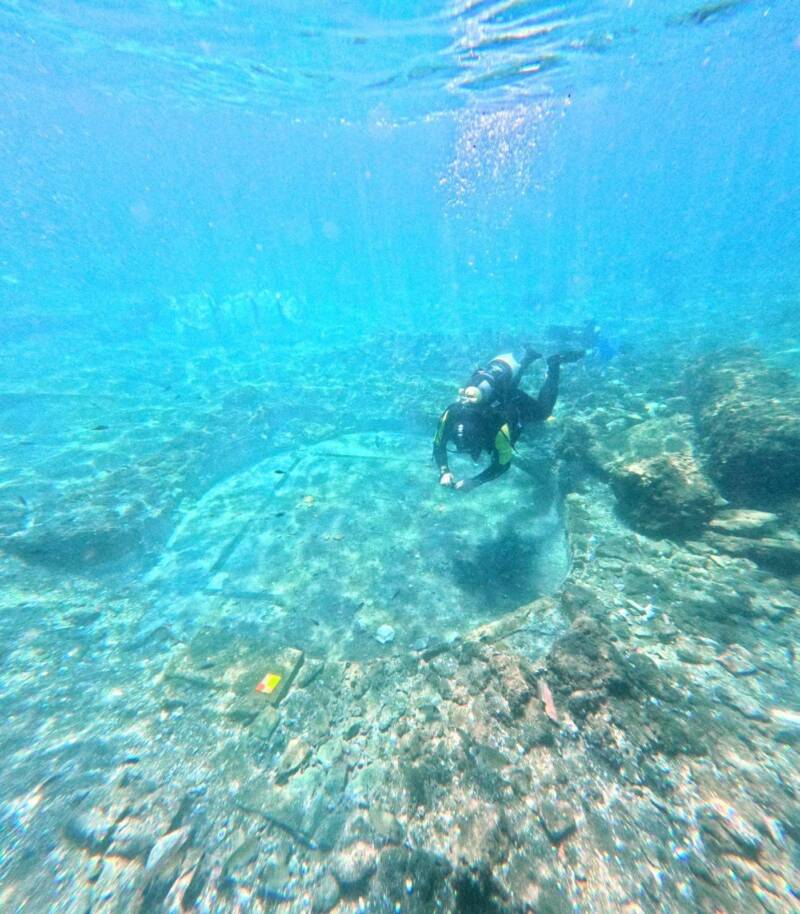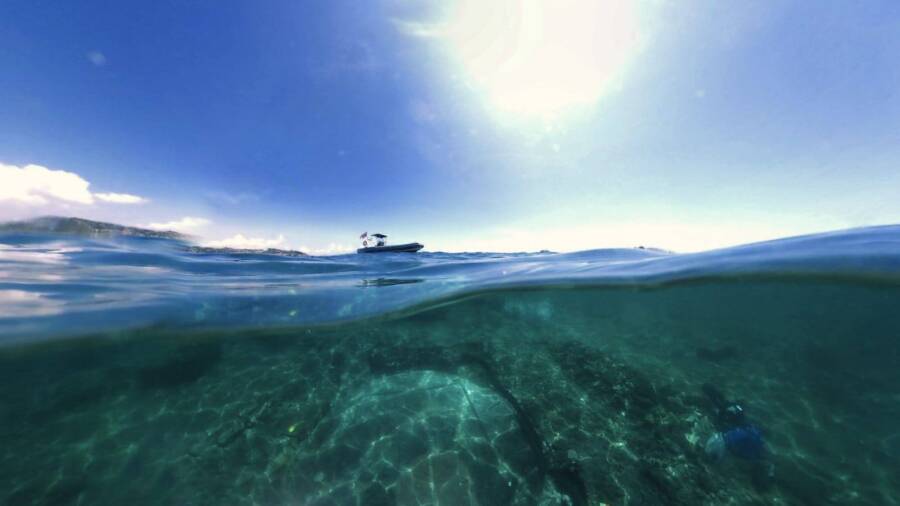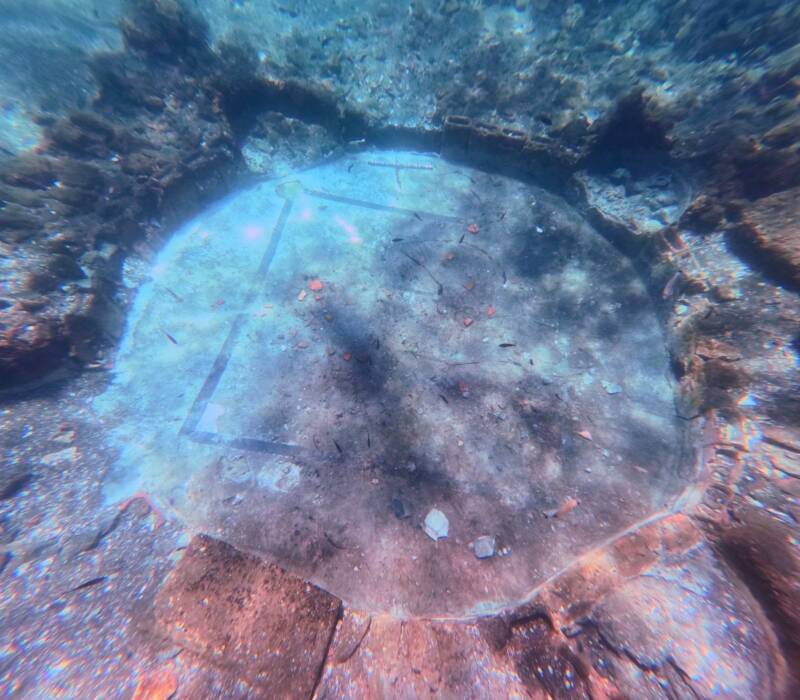Though the entire city of Baiae sank into the Mediterranean due to underground volcanic activity, its submerged ruins remain astonishingly intact to this day.

Parco Archeologico Campi Flegrei/FacebookThis opulent structure featured mosaics, heated floors, and wall paintings that are still visible after approximately 2,000 years.
In ancient Rome, the seaside city of Baiae was known as a “vortex of luxury” and a “harbor of vice.” It drew powerful figures, including emperors, looking to party in lavish surroundings. And in the ruins of this ancient city, now completely submerged in the Mediterranean near Naples, researchers have uncovered the remains of a bathhouse that may have been owned by the famous Roman orator, statesman, and philosopher, Cicero.
According to ancient sources, Cicero had a villa in Baiae. Ultimately, however, both the famous orator and the infamous Roman party city would meet tragic ends.
The Luxurious Bathhouse Discovered Among The Sunken Ruins Of Baiae
According to a Facebook post from the Campi Flegrei Archaeological Park, the bathhouse was first discovered in 2023, at a depth of about 10 feet in Zone B of the Parco Archeologico Sommerso di Baia, about 15 miles west of Naples, Italy. Researchers have now fully documented the ancient bathhouse, which they found to be elaborate and sophisticated.

Parco Archeologico Campi Flegrei/FacebookThe bathhouse ruins sit mere feet beneath the waves off the coast of Naples.
Among the ruins of the bathhouse, researchers found a well-preserved mosaic floor supported by pilae, or bricks, which were once part of the bathhouse’s suspensurae system. This system made it possible for hot air to circulate through tubuli, or hollow wall tiles, in order to create a laconicum, or sauna.
Researchers also uncovered ceramic materials and “small but significant” traces of wall paintings within the bathhouse, both of which suggest that the bathhouse belonged to a prominent Roman citizen. In fact, researchers have a guess about who once occupied it.
“The hypothesis, currently being explored, is that we may be standing in front of the Baths of Cicero’s Villa,” the Campi Flegrei Archaeological Park wrote on Facebook.

Parco Archeologico Campi Flegrei/FacebookThe ruins of the submerged bathhouse remain largely intact even after roughly two millennia.
Indeed, ancient Roman sources state that Cicero, the famous Roman orator, philosopher, and statesman, was one of the many prominent Romans to own a villa in the ancient city of Baiae.
The Fall Of Cicero — And Baiae
Born in 106 B.C.E., Cicero was a prominent Roman figure during Rome’s turbulent transition from Republic to Empire. In the aftermath of Julius Caesar’s assassination, he threw his support behind Octavian, Caesar’s heir and the future emperor Augustus, against Mark Antony. But when Antony and Octavian reconciled, they pursued their enemies, including Cicero, who was violently assassinated in 43 B.C.E. at the age of 63.

Public DomainA 19th-century depiction of the assassination of Cicero.
The city of Baiae, where Cicero had his villa, survived much longer — but would also meet a tragic end. For centuries, the seaside city near Naples was known as a destination for decadence and depravity. The Roman poet Sextus Propertius once called Baiae a “vortex of luxury” and a “harbor of vice,” and it regularly drew Roman elites to its shores.
It was in Baiae that Caligula allegedly ordered the construction of a floating bridge, after he was told he had “no more chance of becoming emperor than of riding a horse across the Gulf of Baiae.” Once the bridge was constructed, Caligula rode across it. It was also in Baiae where the Roman emperor Hadrian died in 138 C.E. while indulging in the city’s baths, and where his predecessor Nero constructed a series of luxurious estates.

Public DomainA depiction of Baiae before it sank into the Mediterranean Sea.
But Baiae was battered by invasions and geological instability as the centuries passed and, by the fourth century C.E., it had begun to sink into the Mediterranean Sea. The city steadily continued to sink — and is still sinking today — submerging its opulent ruins beneath the waves.
Now, the full documentation of the newly-uncovered bathhouse provides an exciting look back at Baiae’s history. And perhaps it’s even a physical link to Cicero, one of ancient Rome’s most famous figures.
After reading about the opulent Roman bathhouse in Baiae that may have once belonged to the Roman orator Cicero, go inside the curious question of why the Roman Empire fell. Then, discover the incredible stories behind some of Rome’s fiercest gladiators.





